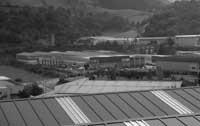SAT/OIL PROGRAM: Tool to increase worker environmental care
The AT/OIL Program was presented in the November issue of Science and Technology, announcing the basis of the project. The methodology offered by this Programme is basically a methodology for understanding the environmental situation of companies and starting to seek solutions to problems, based on the collaboration of trade unions and workers. In the Industrial Estate of Itziar in Gipuzkoa a a section of the Program (state project) dedicated to solvents has been carried out.
The most environmentalist Swedish society

At the same time, a similar programme promoted by local unions, Volvo and other companies has also been carried out in Sweden. However, the results have been very different in both places and it must be recognized that in Sweden they are much more advanced in these issues. The reason is that ecological awareness is deeply rooted in Swedish society, except for exceptions, because the nonsense of the Swedish company Boliden in the area of Doñana cannot be forgotten.
While the proposals developed at Itziar have focused exclusively on increasing the knowledge and habits of the staff, the Swedish companies that have implemented the Program are already proposing changes in their products. For example, almost all Swedish companies using solvents (around 90%) have replaced solvent base paints with water-based paints. Moreover, with the suspicion that the glycol section of this water base can negatively affect the health of the worker, the harmful nature of this base is being investigated, which can lead to further changes.
Little attention to the environment
Although prediagnosis has been made in four companies, the SAT Program has been developed in the companies GKN (AIRE CARDAN), IRUDEX and ANAYAK. The process in which solvents are used in these three companies and their knowledge by the staff has been analyzed. The processes explored are: selection and purchase, accumulation, use and treatment of waste.
The conclusions of the study are as follows:
- At the time of product selection and purchase, in general, environmental risk or health impact is not taken into account. The price and efficiency is the most observed in the purchase of the product and to a lesser extent the cost of the treatment of the waste. The product is purchased in duly labeled 200 liter jerrycans, but is then passed into small jerrycans without storing the label. Moreover, in most cases these materials accumulate without covering the outside.
- Solvents are used in two processes: cleaning and painting. Manual cleaning except GKN. In painting they are used to dilute solvents and correct last minute defects. In both cases, the dosage is performed manually and the treatment of both rags and paper. On the other hand, although they have painted cabins, in many cases they do not use them properly.
Changing the attitude of the staff
Although the methodology used did not require the participation of entrepreneurs, in most cases the entrepreneurs have collaborated facilitating the work. The participation and joint collaboration of four unions, CCOO, UGT, ELA and LAB, has also been fundamental to the good development of the Program, since this plurality has allowed this work to be visualized unevenly from all sectors.
Within the program, education and awareness have taken their most important place, since the main objective has been to change the attitude of workers. The Program, in addition to offering an educational course, has completed this phase with four materials: triptych, specialized magazine, CD-ROM and video. The results of these methods and materials have been different from the point of view of usefulness: while the results of the courses and triptychs have been satisfactory, the rest of the materials have been used insignificantly. The analysis of subsequent staff behavior in the analysis of results and achievements has been fundamental. An increase in employee product care is generally observed. However, it is in doubt to what extent that attention has been rooted in customs forever. This remains a point to be audited later.
This first phase of the SAT/OIL Program has paid off. Looking ahead, it has been chosen to organize a new education course in which the worker is offered deeper information about each product and is informed of the products and substitute processes. The final objective would be to organize, together with the entrepreneurs, discussion tables and agree on proposals and deadlines for the implementation of the changes.
Emissions due to industrial use* of solvents
Activity | Percentage of emissions |
Paint application in automotive manufacturing | 6.3 |
Paint applications in other industries | 32.0 |
Metal degreasing | 12.8 |
Dry cleaning | 4.1 |
Rubber treatment | 2.1 |
Pharmaceutical manufacturing | 4.5 |
Manufacture of paints and inks | More information |
Manufacturing adhesives | 3.6 |
Printing company | 13.4 |
Extraction of edible and non-edible fats and oils | 4.3 |
Adhesive coating | 10.4 |
Forest conservation | 5.1 |





